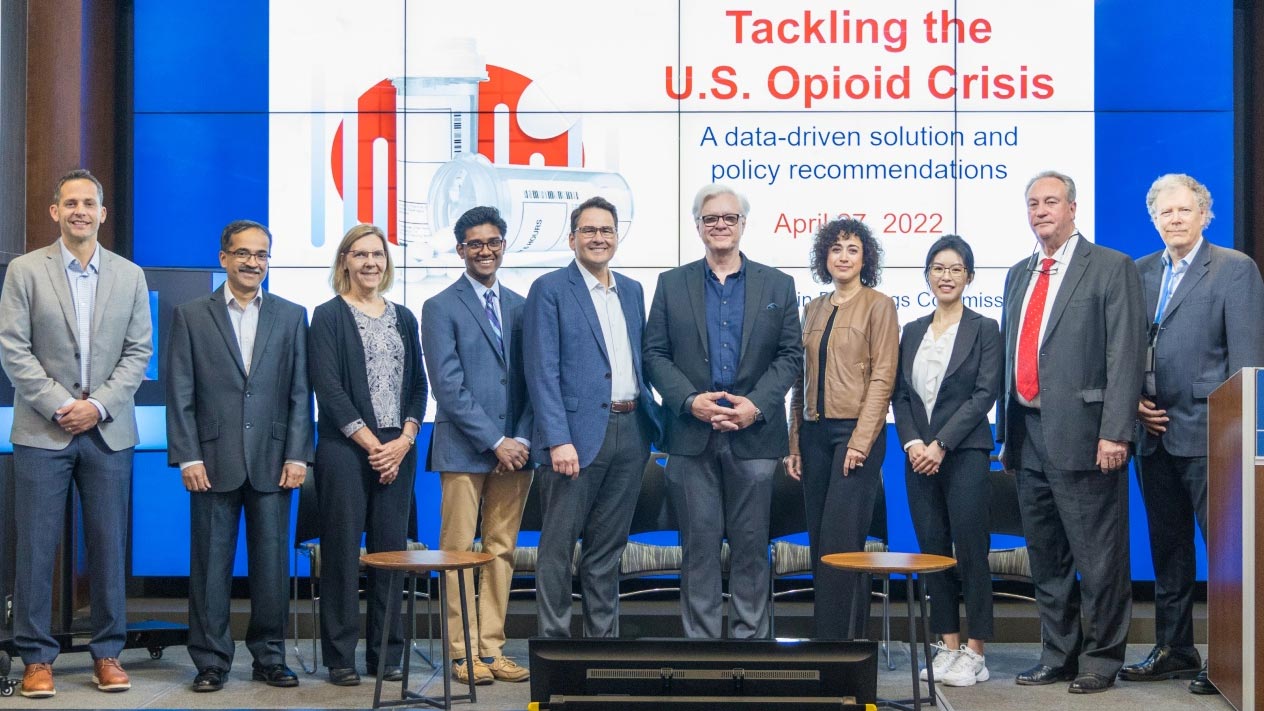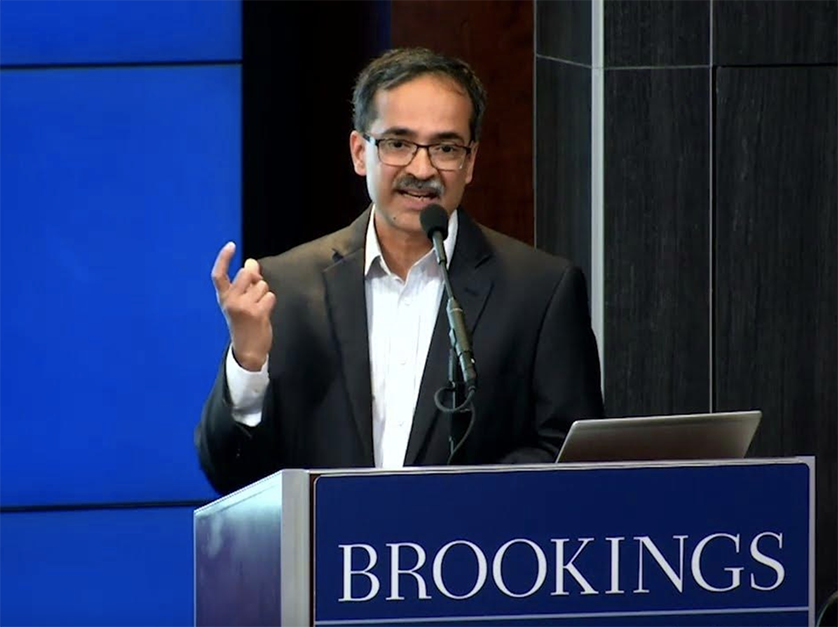2021–22 Commission

A Data-Driven Strategy to Tackle the Opioid Crisis
On April 27, 2022, our commission and researchers presented a new AI-powered anomaly detection tool to thwart opioid diversion.
According to some reports, more than 100 billion prescription hydrocodone and oxycodone pills were distributed in the United States between 2006 and 2014. A staggering percentage of suspicious opioid transactions has fueled a long-lasting epidemic of opioid dependency and death. In 2020 alone, approximately 69,700 people died of overdoses involving opioids in the United States.
Inaugural Project: Analyzing the Opioid Epidemic
In the first of three projects by the Olin Brookings Commission, researchers and commission members aimed to tackle the opioid epidemic and, specifically, the patterns of diversion within the drug supply chain that have fueled costly and deadly patterns of opioid dependence and death in communities across the country.
In collaboration with Olin’s Center for Analytics and Business Insights, the research team tapped into advances in data collection, data mining, artificial intelligence and machine learning to tackle the problem. The solution: Olin researchers developed a suite of anomaly detection tools to identify diversion trends in data submitted to a database maintained by the US Drug Enforcement Administration.
Using historical data from the Automation of Reports and Consolidated Orders System (ARCOS) database from 2006 to 2012, including more than 400 million opioid transactions and 277,000 buyers, researchers developed a tool to flag and stop fraudulent opioid shipments before they are diverted. The team identified patterns among likely diverters and tested their findings against a known database of convicted buyers.
Olin Brookings Commission: Tackling the US Opioid Crisis
The inaugural WashU Olin Brookings Commission presents "Tackling the US Opioid Crisis: A Data-Driven Solution and Policy Recommendations."
A Precise, AI-Driven Tool
The tool is designed to flag future diverters with 100% precision accuracy (i.e., if the tool flags a buyer as a diverter, it is almost guaranteed that the prediction is correct). In other words, the tool will not produce false positives. The team achieved that level of precision accuracy because the tool “lives with” a moderate degree (51%) of recall accuracy (i.e., the tool catches about one in two diverters). In other words, the tool will result in many false negatives.
Download the 2021–22 Olin Brookings Commission report, “Tackling the US Opioid Crisis: A Data-Driven Solution and Policy Recommendations,” presented April 27, 2022, at the Brookings Institution. Download the report.
The Commission’s Opioid Policy Recommendations
Through its work, the 2021–22 Olin Brookings Commission developed a series of policy recommendations that, in combination, can overcome existing policy obstacles to empower industry and government to implement the team’s detection and alert system to thwart opioid diversion in the supply chain. Among those recommendations:
- Establish a daily or near-real-time pilot for integration of the anomaly detection tool to test the operational methods.
- Modernize ARCOS technology infrastructure to support daily or near-real-time data entry by registrants.
- Update the law to require the annual release of ARCOS data to technology stakeholders for the purpose of testing and refining AI and machine learning tools and revalidating initial findings.
- Require the sharing of flagged data across federal agencies to include agencies with antidiversion policy or law enforcement efforts.
Research Findings
A Center for Analytics and Business Inights analysis of 400 million opioid transactions between 2006 and 2012 found:
- Opioid purchase levels: Legitimate buyers purchase lower levels of opioids on a per-unit basis; their behaviors are very similar to each other, and the amounts they purchase over time are consistent.
- Purchase frequency: Legitimate buyers purchase lower levels of opioids on a per-unit basis; their purchase amounts are consistent over time, and buyers look very similar to each other.
- Population density: Legitimate buyers purchase lower levels of opioids on a per-unit basis per day and per person. Again, purchase amounts are consistent over time, and buyers look very similar to each other.
First Commission Collaborators and Timeline
-
Inaugural Commission Members
- Anthony Sardella, Founder, evolve24; Faculty Member, WashU Olin Business School; Commission Chair
- The Hon. Mary Bono, Board Member, Community Anti-Drug Coalitions of America; Former US Representative
- Dr. Ann Marie Dale, Professor of Medicine and Occupational Therapy, Washington University School of Medicine
- Van Ingram, Executive Director, Kentucky Office of Drug Control
- Gina Papush, formerly Global Chief Data and Analytics Officer, Cigna
- Darrell M. West, Vice President and Director, Governance Studies; Senior Fellow, Center for Technology Innovation, Brookings
-
Leading the Research
Seethu Seetharaman, academic director of Olin’s Center for Analytics and Business Insights, led the research effort with support from Michael Wall, professor of practice and CABI co-director, along with PhD candidate Luoyexin (Annie) Shi and Chenthuran Abeyakaran, a master’s degree student in data analytics and statistics at WashU who received his bachelor's degree in computer science and applied math in 2021.
-
Project Milestones
- April 27, 2022. The Olin Brookings Commission presented its research and policy recommendations to industry representatives, law enforcement and medical professionals, and policymakers at the Brookings Institution.
- November 2021. The research team submitted its work developing an AI-driven anomaly detection tool designed to flag potential diverters of opioid shipments to the Journal of Marketing for review.
- August 19, 2021. The second commission meeting on the opioids crisis reviewed research progress and offered further direction.
- August 16, 2021. The team from Olin’s Center for Analytics and Business Insights reported an update on machine learning efforts to flag suspicious opioid transactions. Read more.
- May 12, 2021. The first meeting of the inaugural Olin Brookings Commission took place.
